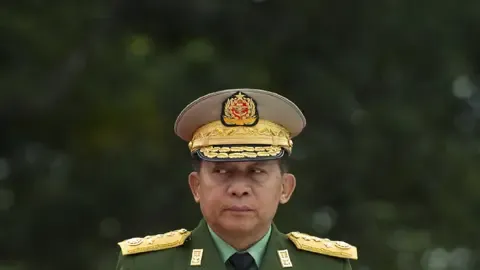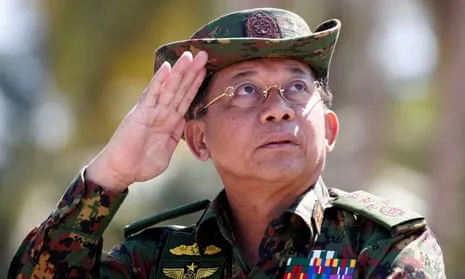The military-controlled government of Myanmar has been showcasing its latest project, a giant sitting Buddha statue set to be consecrated on August 1. Located in the capital, Naypyitaw, the 228-acre site comprises small pagodas, ordination halls, rest houses, water fountains, lakes, and a park. The 228-tonne statue, measuring 24.7 metres high, is carved in the traditional cultural style of the Yadanabon dynasty and is said to be the world’s highest sitting marble Buddha image.
The project is headed by Senior General Min Aung Hlaing, who has been quoted as saying it will be the tallest sitting marble Buddha statue in the world. The general has been supervising the installation of various parts of the project, despite the ongoing civil war that has killed thousands, uprooted millions, and caused vast destruction, including to Buddhist monasteries, Christian churches, and Islamic mosques.
The construction of the giant Buddha statue is part of a broader effort by the military to demonstrate its piety and commitment to the Buddhist faith. Generals who seized power in 2021 have been engaged in battles across much of the country, with the army’s extensive advantages in manpower and weapons unable to subdue the pro-democracy resistance forces. The army’s efforts to win hearts and minds are urgent, if difficult, given its fierce attacks, including the burning down of villages and displacement of their inhabitants.
The military’s efforts to showcase Buddhist patronage are also aimed at gaining popular support and cementing alliances with right-wing monks who share their ultranationalist views. The construction of giant Buddha statues is common in Myanmar, where generals view themselves as the protectors and patrons of Buddhism. By building pagodas and presenting offerings to highly-respected monks, they believe they can gain religious merit and popular support.

Senior General Min Aung Hlaing (Via Min Aung Hlaing/Twitter)
In the past, Myanmar’s military leaders have built giant Buddha statues to demonstrate their devotion to the faith. For example, General Than Shwe, who ruled Myanmar from 1992 to 2011, consecrated the Uppatasanti Pagoda, a replica of the country’s famous Shwedagon pagoda, in 2009. He also had a 11.5-metre-high sitting marble Buddha statue built in Yangon in 2001.
The current project is a continuation of this tradition, with Min Aung Hlaing revealing that the plan was conceived when Than Shwe handed over a giant piece of raw marble rock that was given to him by a mining company in 2017. The rock was then carved into the current giant Buddha statue, which is said to be more than 5,000 tonnes in weight.
The construction of the giant Buddha statue, despite the ongoing conflict and destruction, highlights the complexities of the situation in Myanmar. The military’s efforts to promote Buddhist patronage and gain popular support are aimed at justifying its rule and maintaining its grip on power. However, these efforts may also serve to divide the country further, as the conflict continues to escalate and the international community expresses concern over the human rights abuses committed by the military.











































